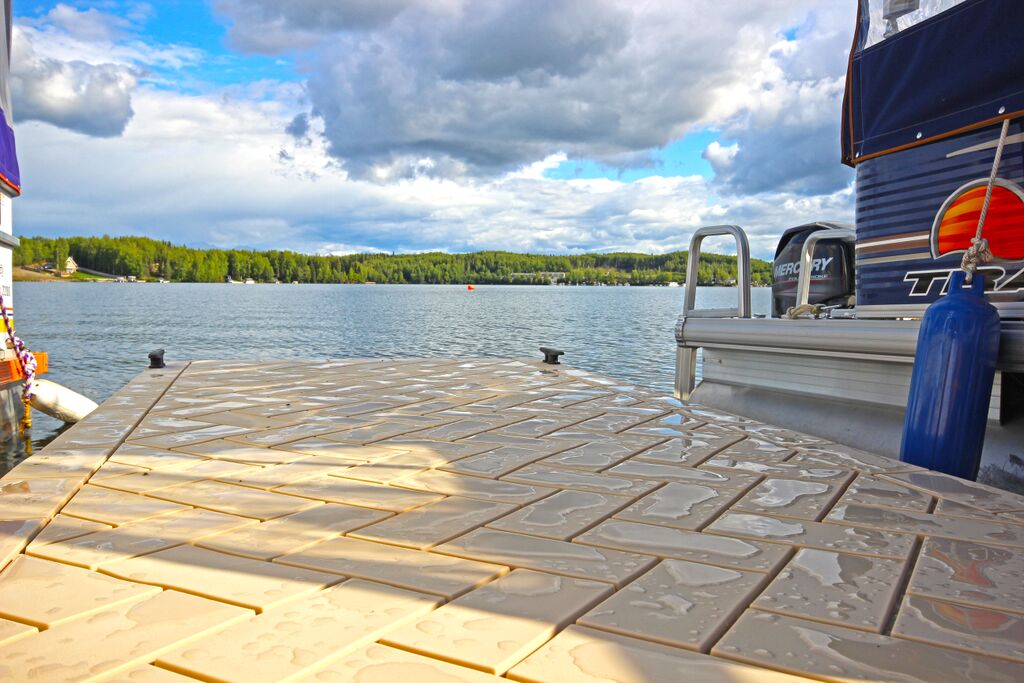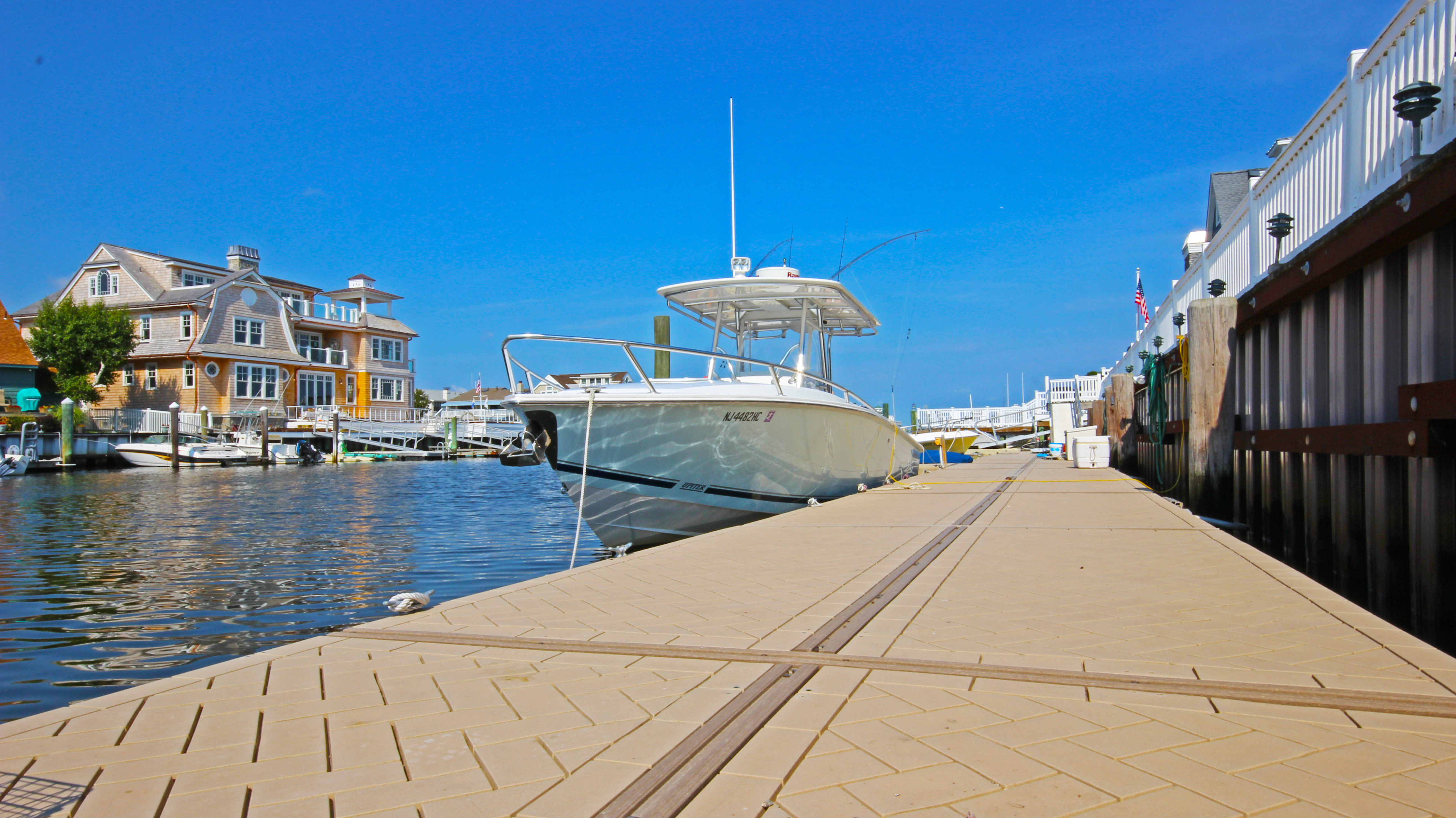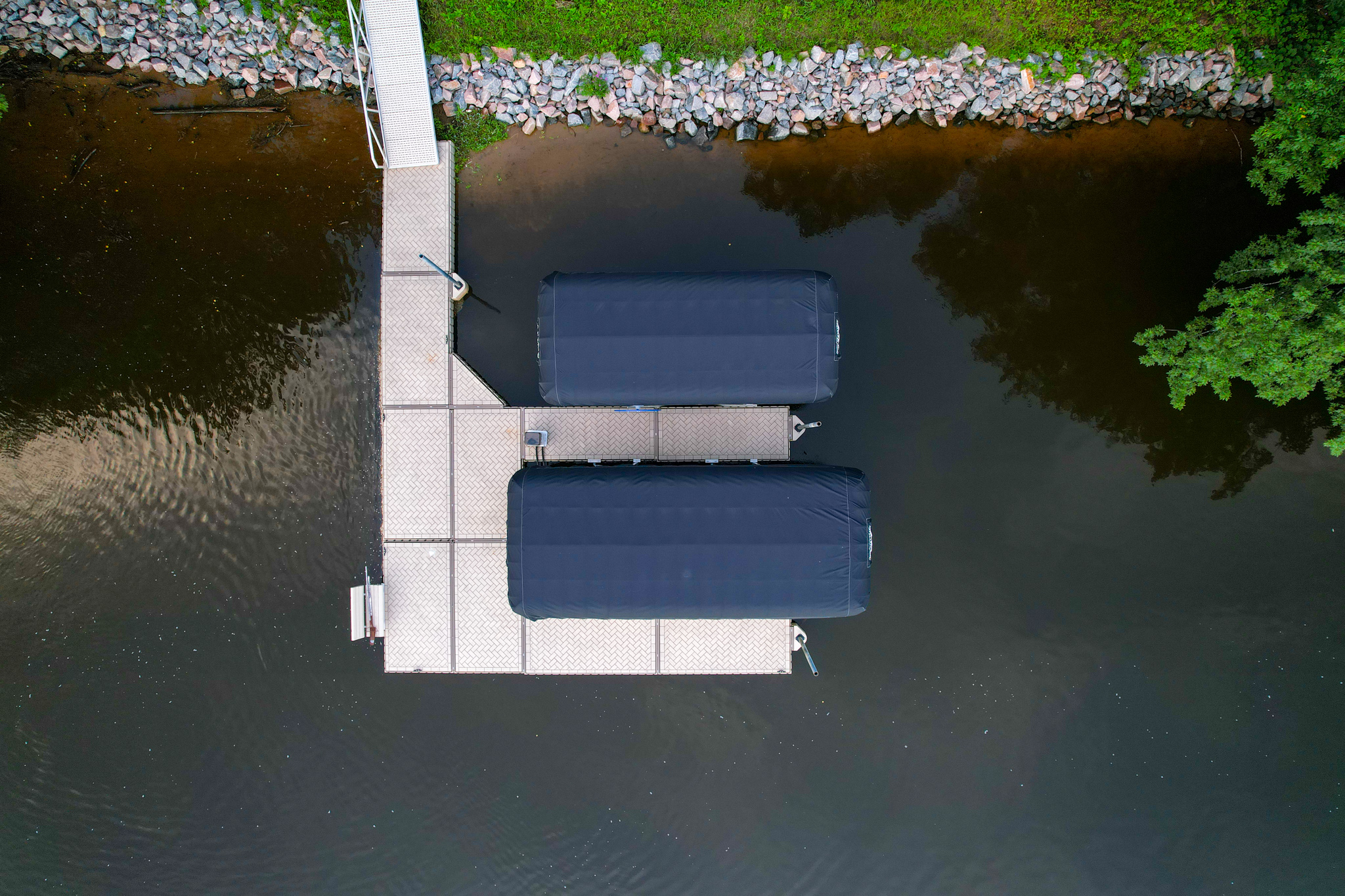Posted on October 24, 2024
The Best Materials for Floating Docks to Ensure Winter Resilience
Written by PolyDock Products Marketing
Living your best waterfront life starts with investing in a quality docking system that guarantees convenience, safety, and reliability. Among the many options available, floating docks have become a popular choice due to their ease of installation, low maintenance, versatility, and durability.
However, there are many personal choices and pivotal considerations when choosing the optimal docking solution, including how much maintenance work you’re willing to do, your budget, and your aesthetic preferences. Depending on your area, there may also be seasonal factors to consider. Below, we discuss popular materials for floating docks, highlighting their pros and cons to help you choose the best option for your needs.

Why Material Selection is Critical for Floating Dock Durability
Choosing the right materials for your floating dock is essential to its longevity, particularly in regions that experience fluctuating weather patterns and harsh winter conditions. Dock materials must resist wear from UV rays, wave action, and heavy use during the warmer months and withstand freezing temperatures, ice expansion, and snow accumulation during the colder seasons.
Winter, in particular, poses several unique threats to dock structures. The expansion and contraction of materials due to temperature changes can weaken docks over time. Ice sheets can exert pressure on dock components, especially in areas where ice moves or shifts in the water. Docks exposed to snow accumulation must also be able to support the additional weight without cracking or buckling.
Carefully selecting materials capable of enduring these conditions helps ensure your floating dock remains functional and safe for all your waterfront activities year-round.
Top Decking Materials for Floating Docks: Pros and Cons
Whether you’re strolling across the dock barefoot on a summer day or lounging on it to enjoy the view, the dock’s decking is what you interact with the most, making its look and feel an integral part of the ownership experience.
Below are some popular decking materials to consider:
- Pressure-Treated Wood: Wood provides a classic, natural aesthetic that seamlessly blends with any environment. It’s widely available, offers the lowest cost, and can be stained or painted in various shades and colors. However, wooden decking is susceptible to warping, rotting, and splintering over time, especially when exposed to freezing temperatures and ice. It also requires regular maintenance, such as sealing and staining, to minimize degradation.
- Composite Decking: Usually made from a mix of wood fibers and plastic, composite decking panels are designed to resist rot, moisture, and splintering. While composite decking performs well in most conditions, it can be prone to expansion and contraction in extreme temperatures, leading to potential warping over time.
- Aluminum: For a more modern and sleek aesthetic, aluminum decking is an excellent choice. It’s lightweight and incredibly durable, able to withstand harsh weather conditions while requiring minimal maintenance. However, aluminum panels can be more slippery than other options, particularly in icy conditions.
PolyDock floating dock systems eliminate the need for separate decking panels, using a seamless, rotomolded polyethylene structure with an integrated deck surface and flotation for its dock sections. Rotational molding is a production technique for producing seamless, one-piece structures that are highly durable and resistant to wear and tear (RotoMold USA, n.d.). Meanwhile, the PolyDock surface features a slip and UV-resistant herringbone brick pattern that’s as easy on the eyes as on the feet.
Choosing Winter-Resistant Materials for Your Floating Dock
Materials like aluminum and high-quality composites are ideal when building a floating dock on a lake in regions with challenging winters. Aluminum, in particular, excels in withstanding freezing and thawing cycles, which can cause cracking or warping in other materials.
For those looking to balance cost and durability, polymer decking like ShoreMaster’s Titan panels is a popular choice. They offer the cost-effectiveness of natural cedar wood panels and provide solid winter protection without constant upkeep (Brinson Marine, 2021).
Finally, floats made from high-density polyethylene are incredibly tough and resistant to punctures or cracks caused by freezing winters. When paired with stainless steel or galvanized hardware, they help ensure the dock stays secure and functional no matter what the elements throw its way.
Comparing Popular Floating Dock Building Materials
When choosing a residential floating dock system, it’s important to consider the materials used and how they perform in different environments. Here’s a quick rundown of popular floating dock materials:
Wood
Pros:
- Natural Aesthetic: Provides docks with a classic, natural look.
- Customizable: Can be stained or painted in various shades and colors.
- Cost: Generally more economical upfront than aluminum and composite plastic docks.
Cons:
- Maintenance: Requires intensive regular maintenance, including staining, sealing, and treating to prevent rot and insect damage.
- Durability: Prone to warping, cracking, and splintering.
Aluminum
Pros:
- Corrosion-Resistance: Ideal for marine environments.
- Lightweight: Easier to handle and install compared to wood.
- Durability: Long-lasting and can support heavier loads.
Cons:
- Heat Retention: Can become extremely hot in direct sunlight.
- Cost: Generally more expensive than wood and plastics.
Polymers
Pros:
- Durability: Highly resistant to impacts, UV rays, and marine growth.
- Low Maintenance: Requires minimal upkeep aside from occasional rinsing.
- Lightweight: Easy to handle and install.
Cons:
- Initial Cost: Requires higher initial investment compared to wooden docks.
Most modern floating dock kits combine aluminum, steel, and high-quality polymers to create reliable, easy-to-own docking solutions. While those with DIY experience may enjoy building their docks, modular dock systems are more reliable, safer, and low-maintenance solutions. Docking systems allow owners to spend less time worrying about maintaining their docks and more time doing what they enjoy.
PolyDock’s Floating Dock Solutions: Built for Endurance
PolyDock floating docks are engineered with one primary goal: to provide a reliable, hassle-free docking experience. PolyDock dock systems are easy to install, remove, reconfigure, and maintain – making them the ideal choice for waterfront owners seeking a straightforward yet premium docking solution.
With their innovative construction and thoughtful design, PolyDock floating docks offer superior stability and durability even in less-than-ideal conditions. Whether facing rough waters or extreme weather, PolyDock systems are built to endure and provide owners with a reliable docking solution season after season.
Contact us today to learn more about our floating dock systems and discover the PolyDock difference.
References:
- RotoMold USA (n.d.). What is Rotational Molding? Retrieved from https://rotomoldusa.com/rotomold/?form=MG0AV3
- Brinson Marine (2021). Decking Panel Options / ShoreMaster Docks. Retrieved from https://youtu.be/743Tw5mWzcA?si=8t6Oc76LzmZl_NF7



